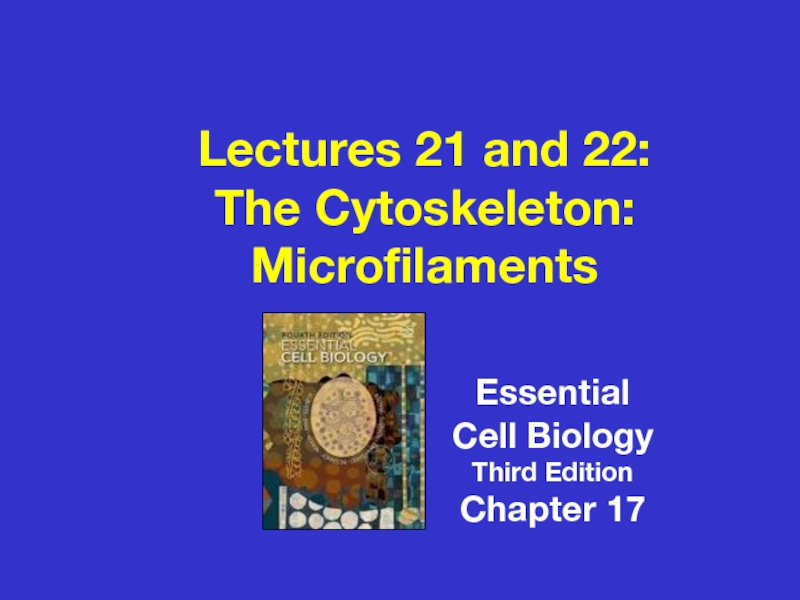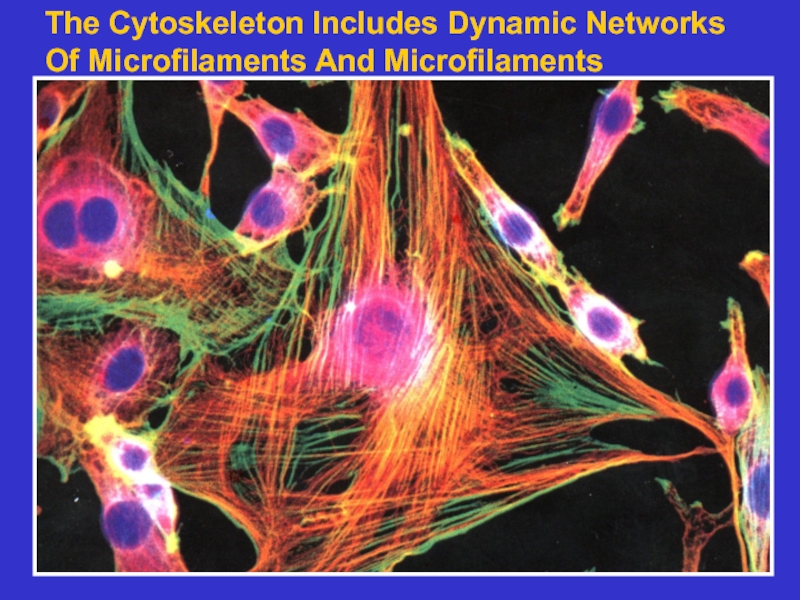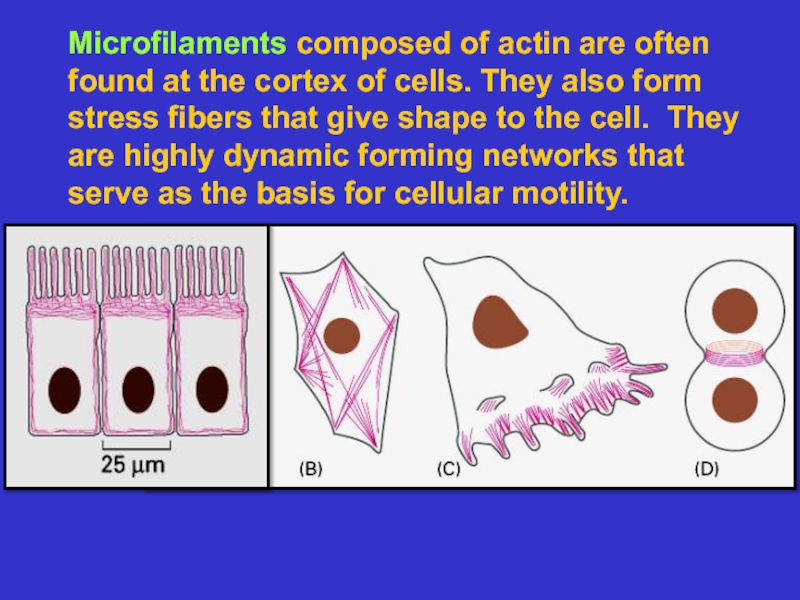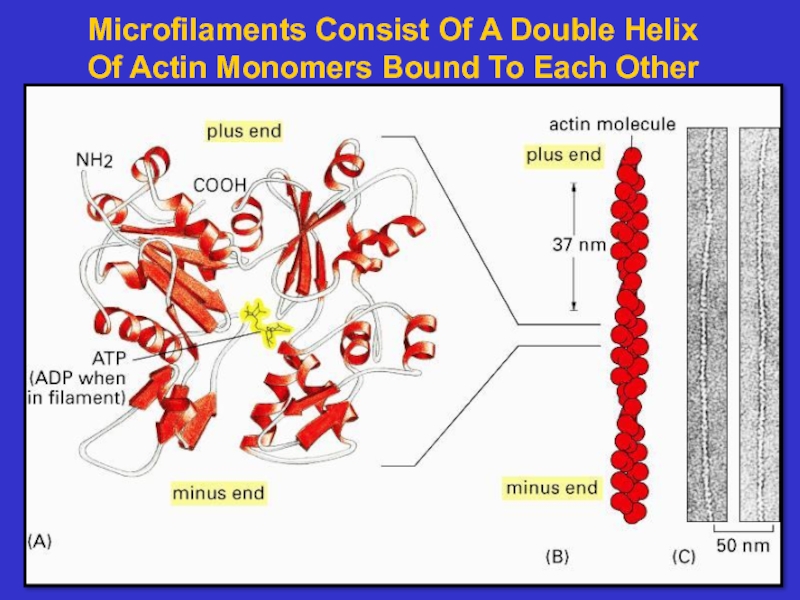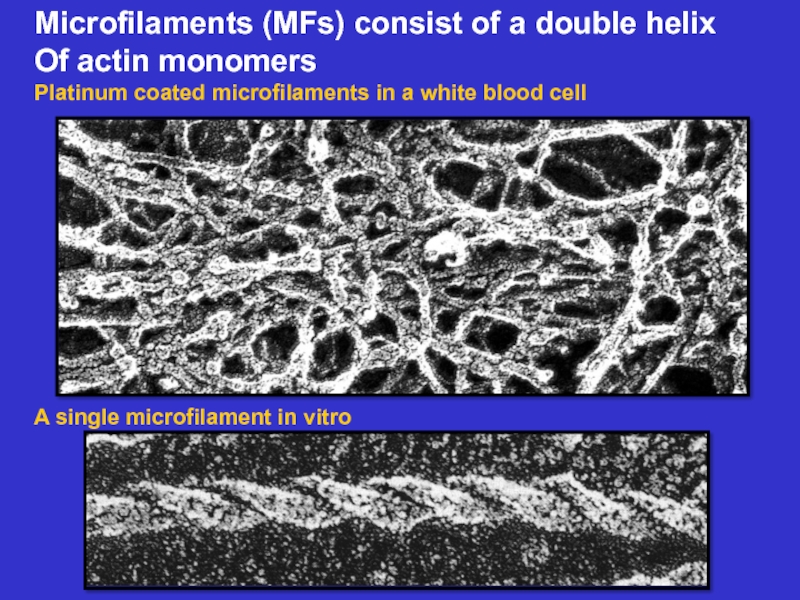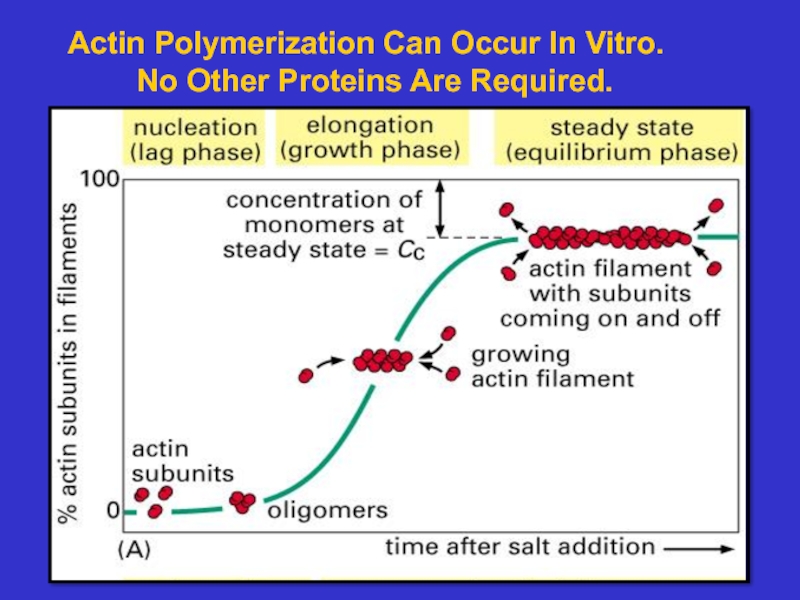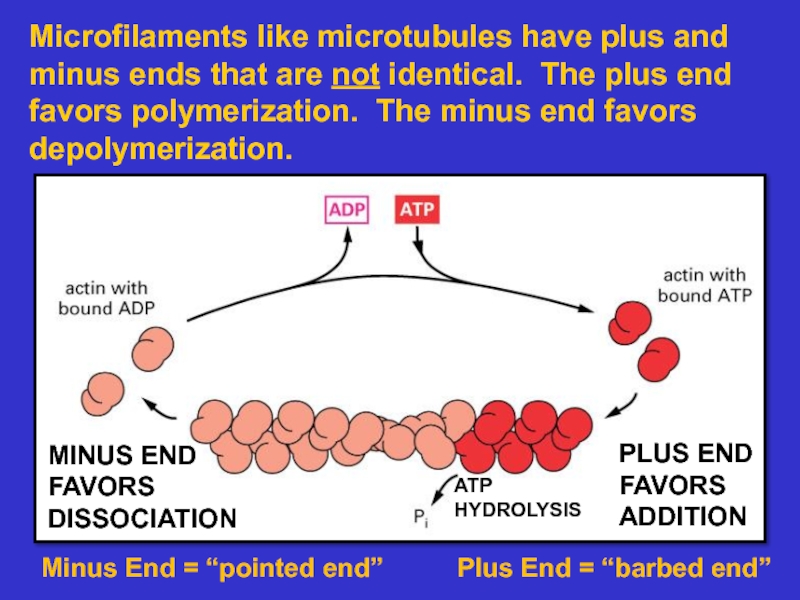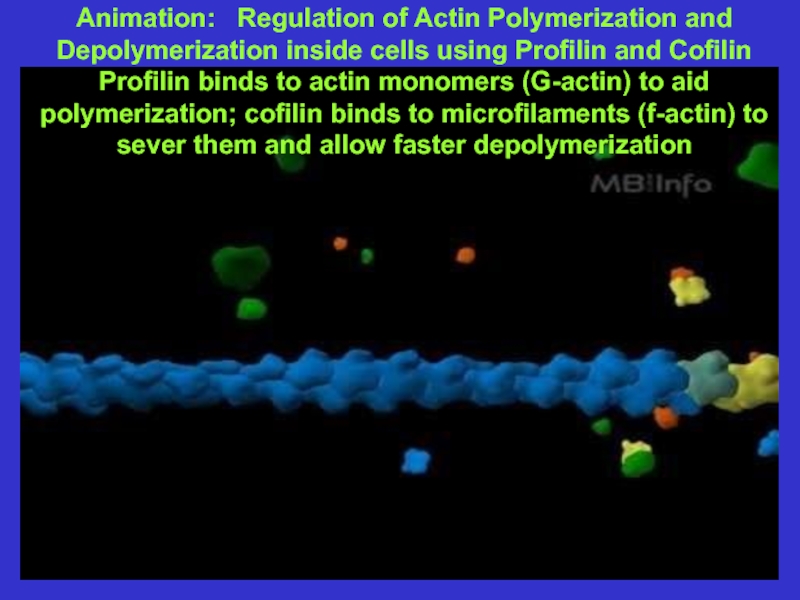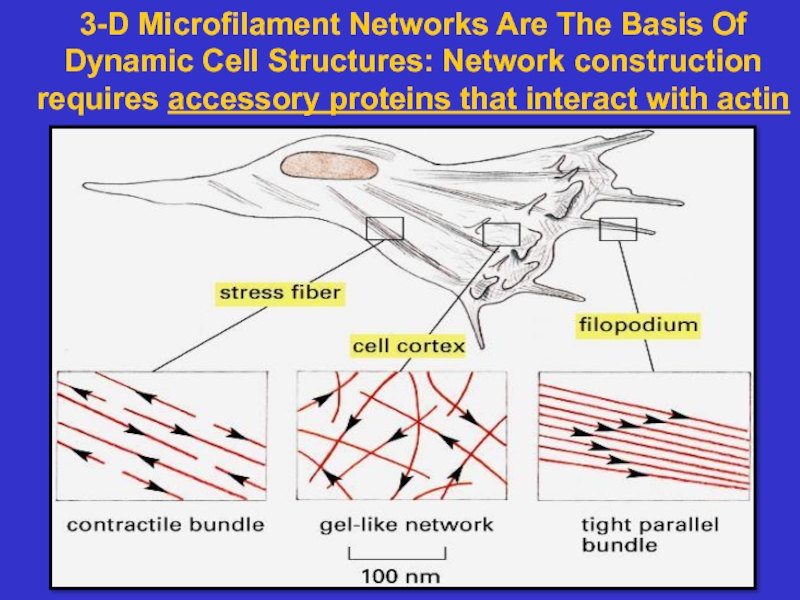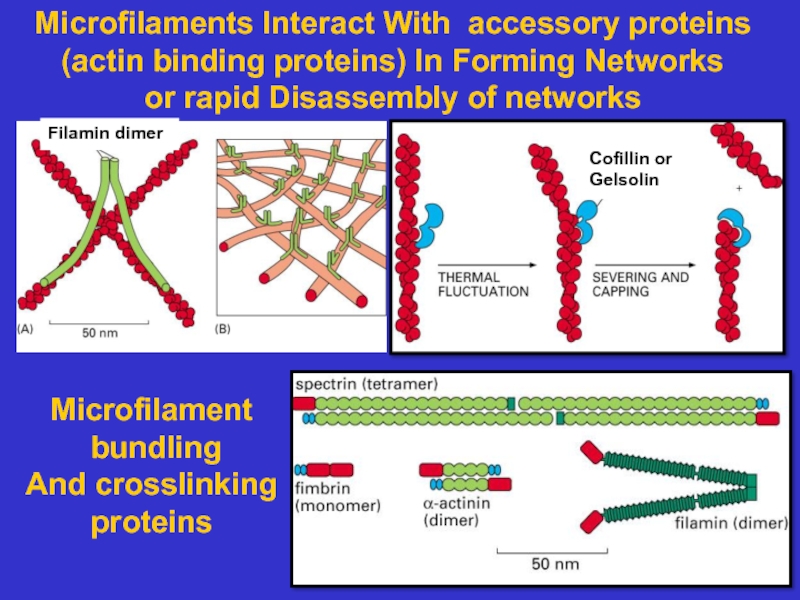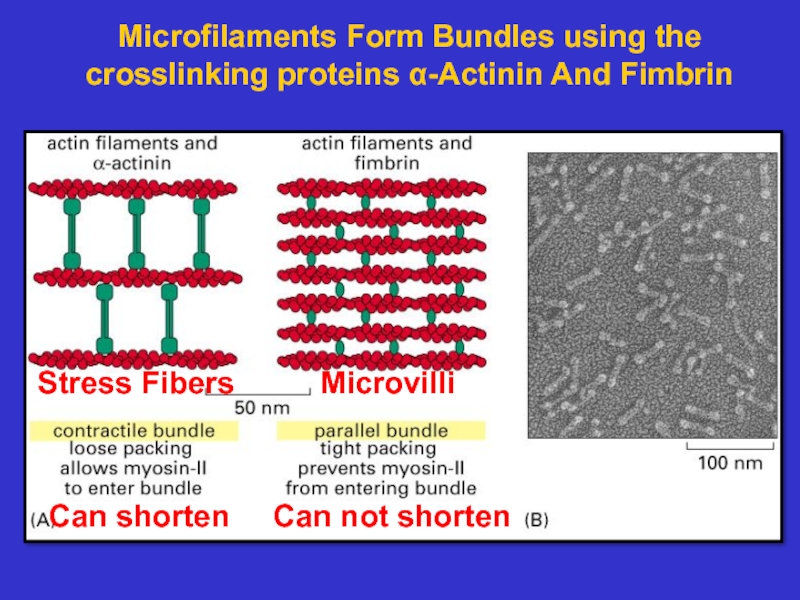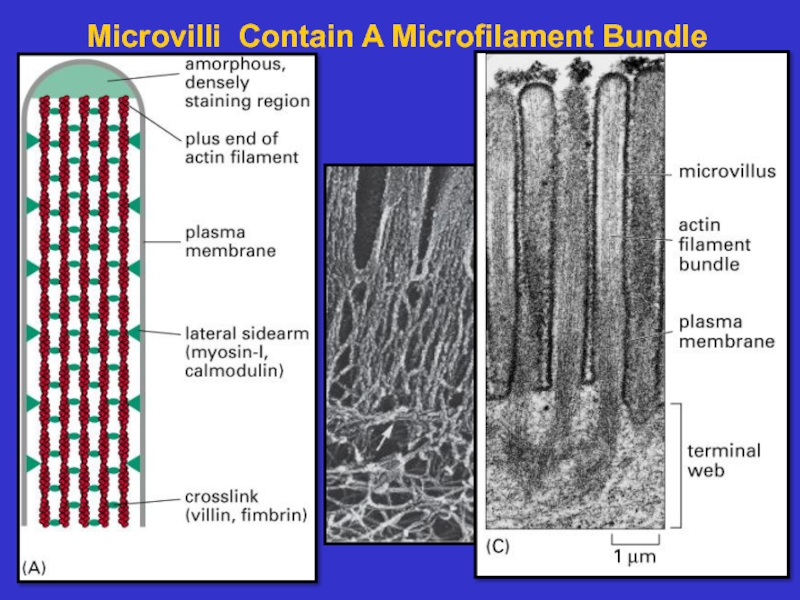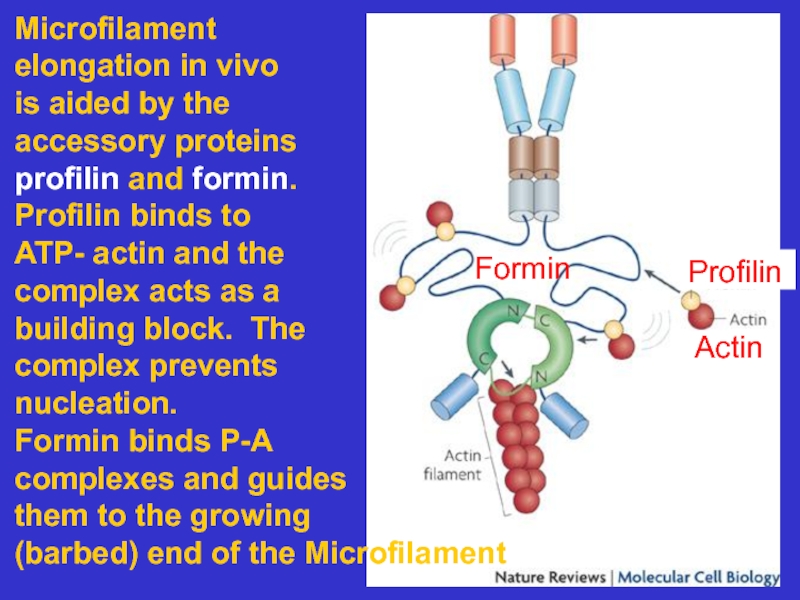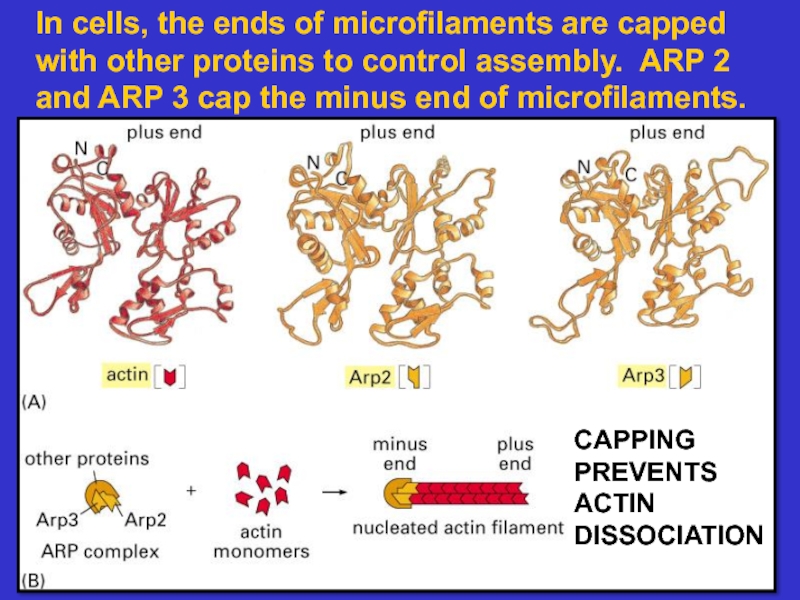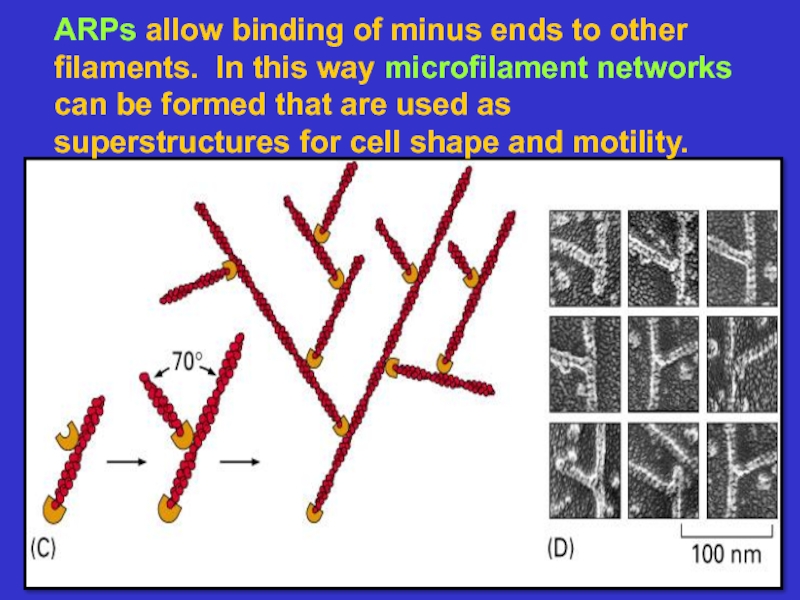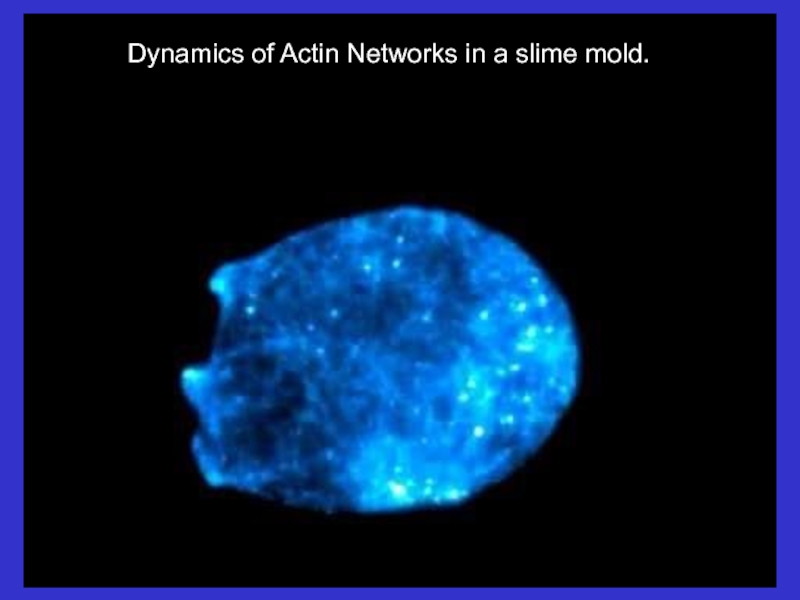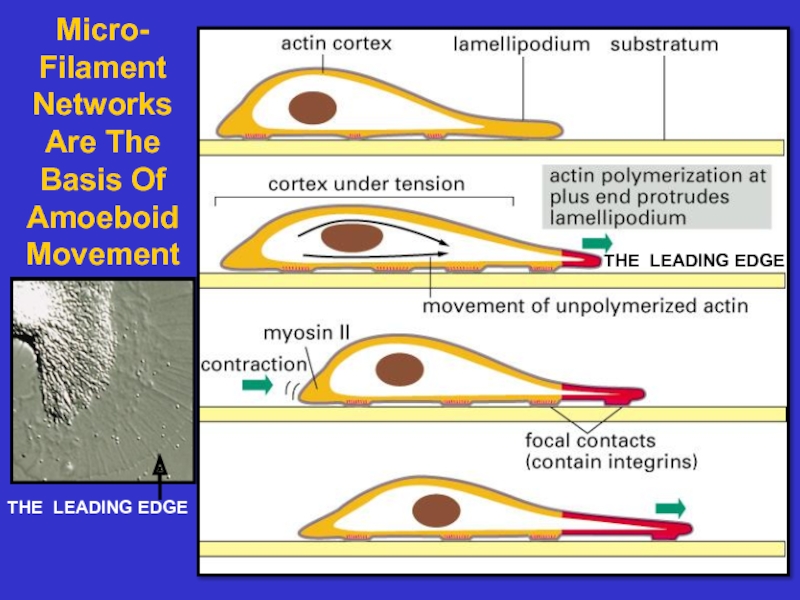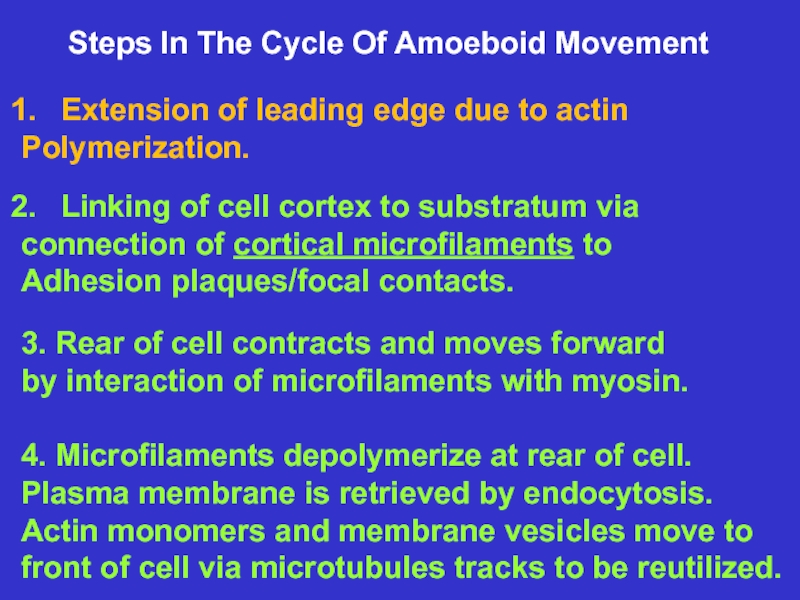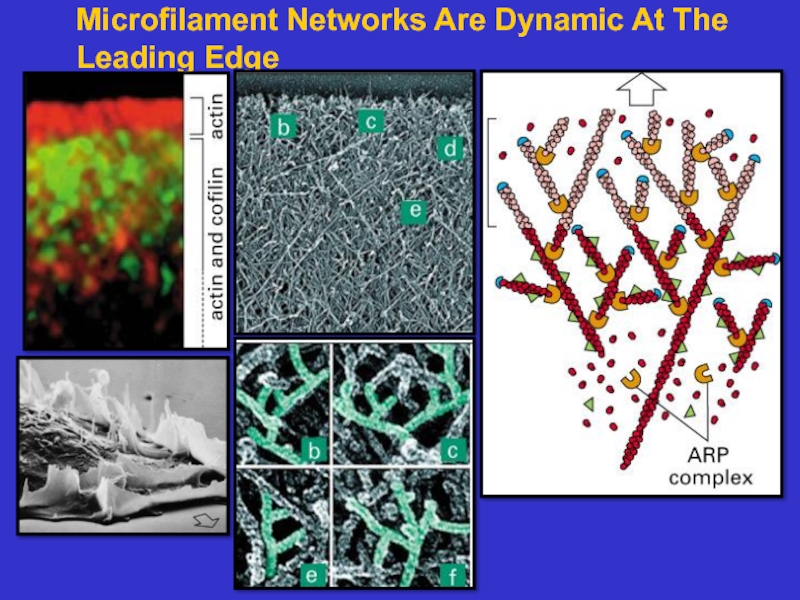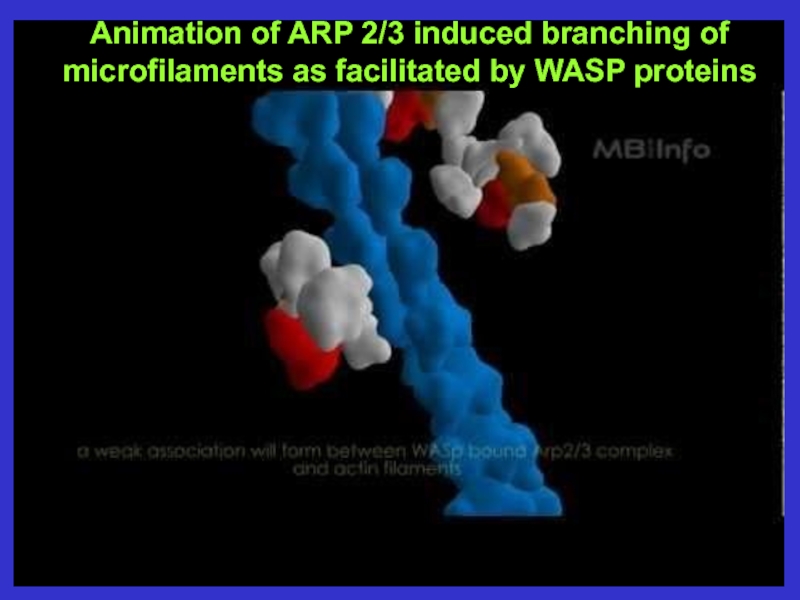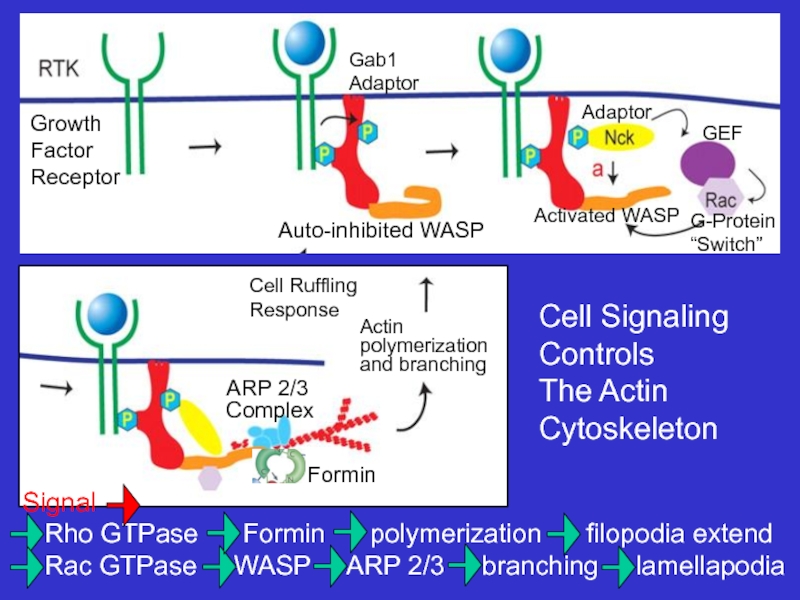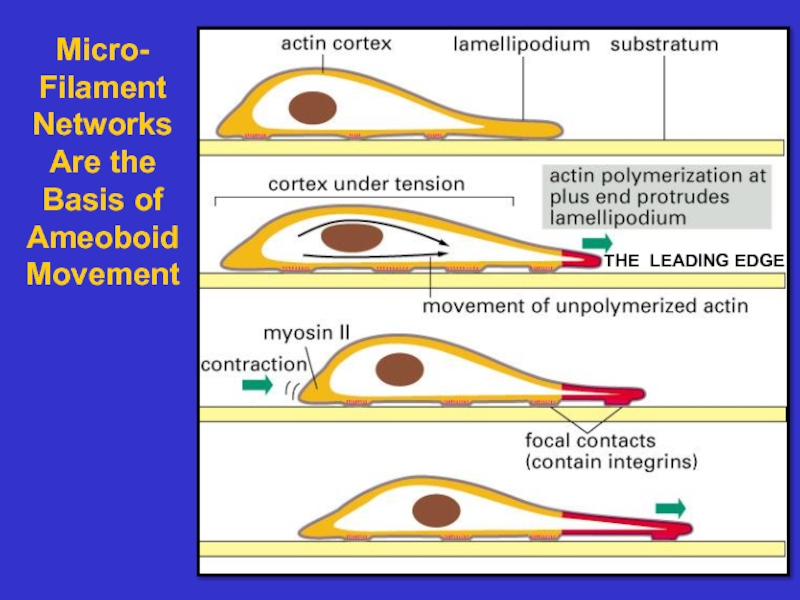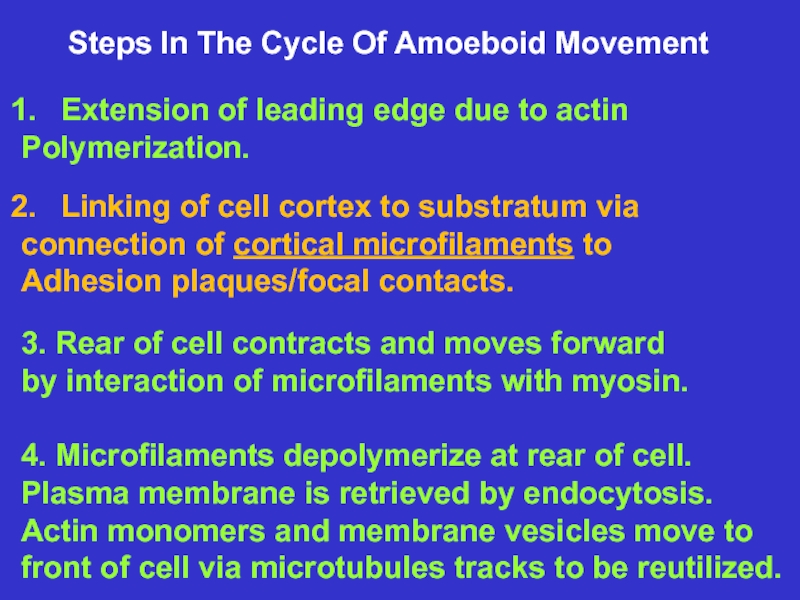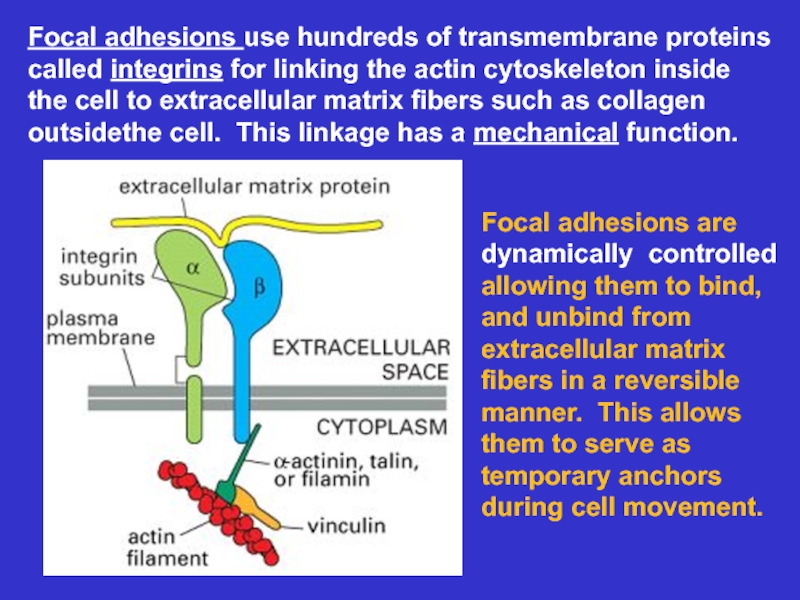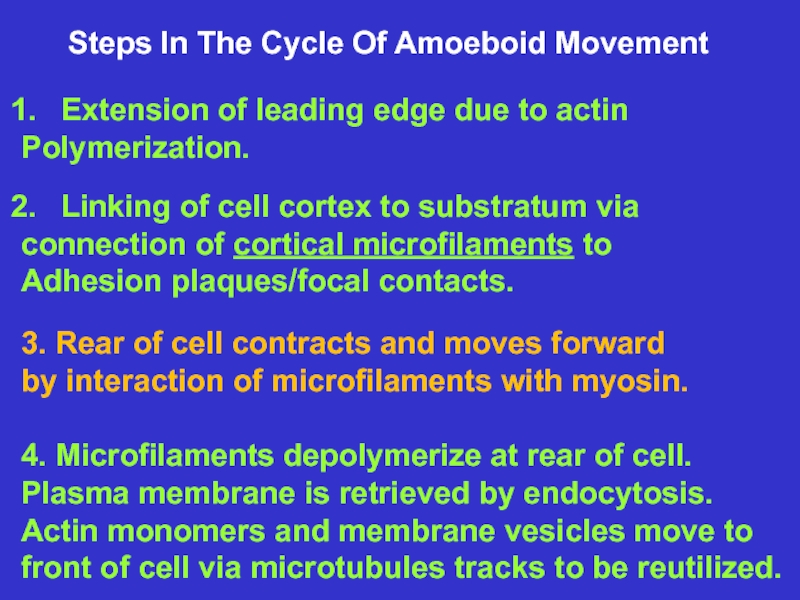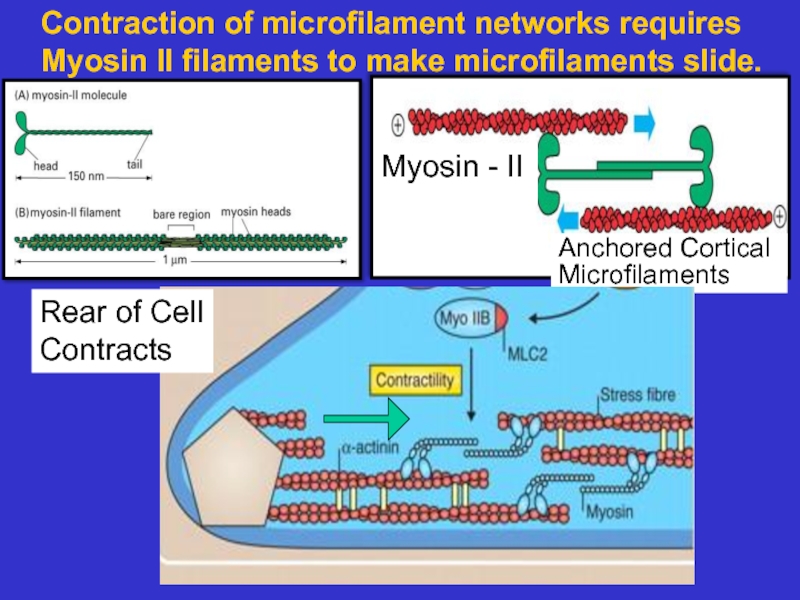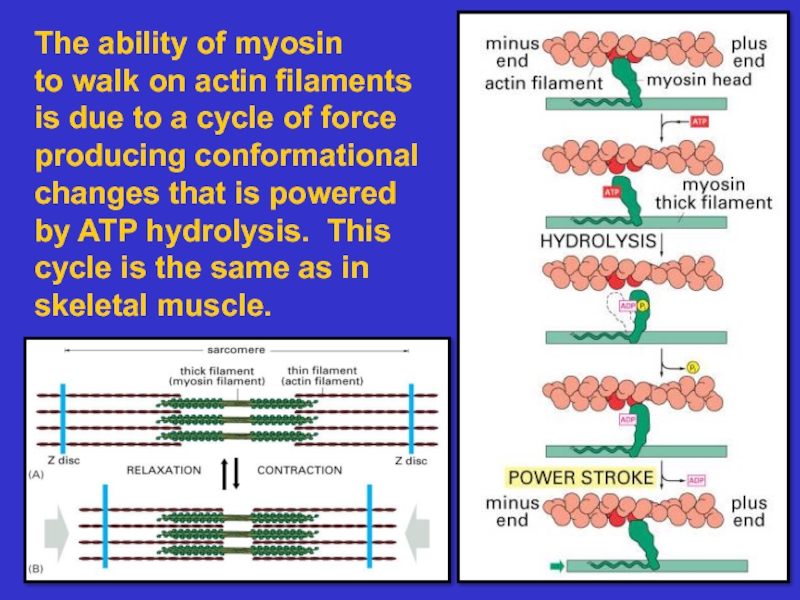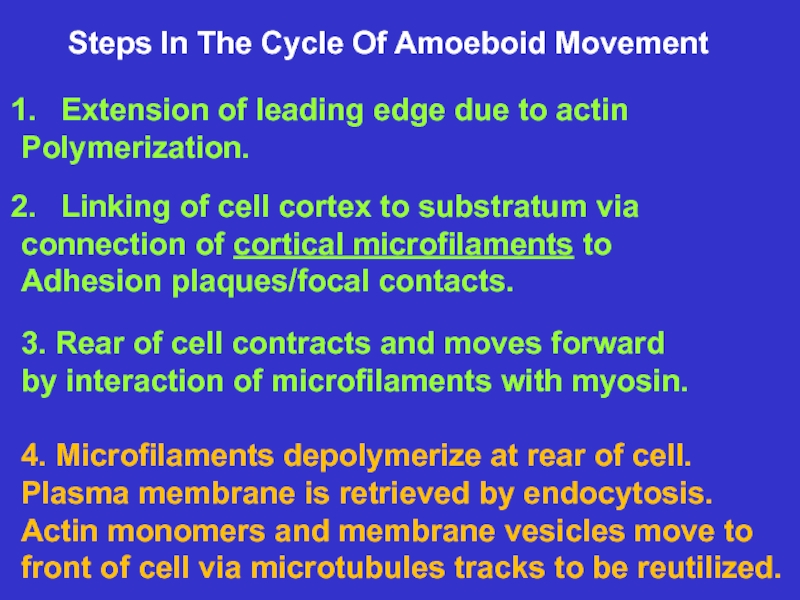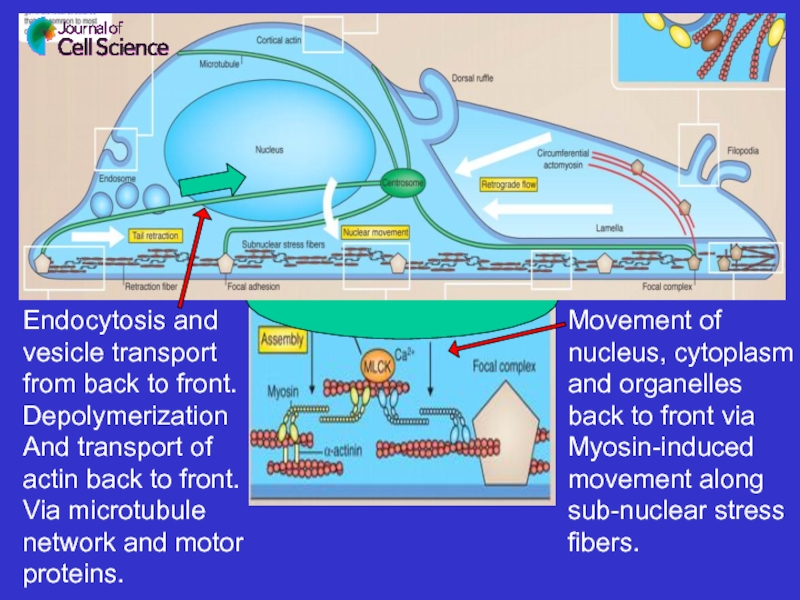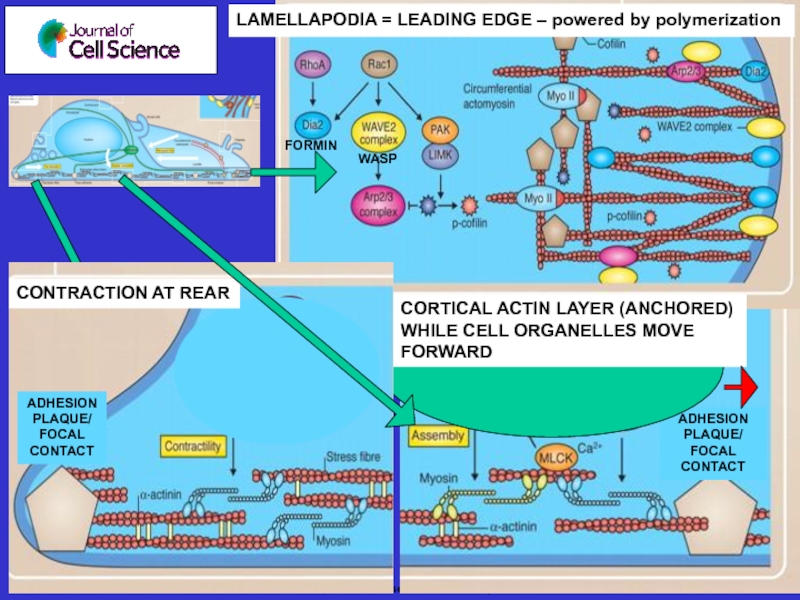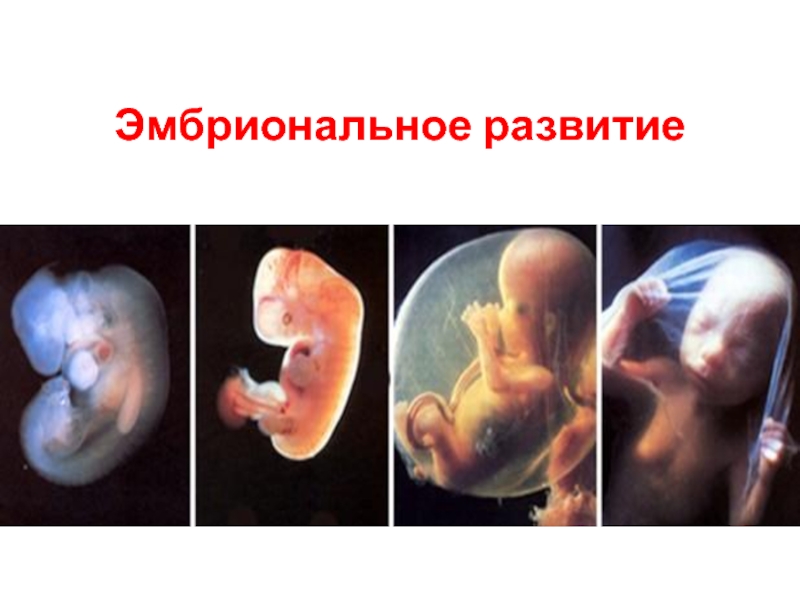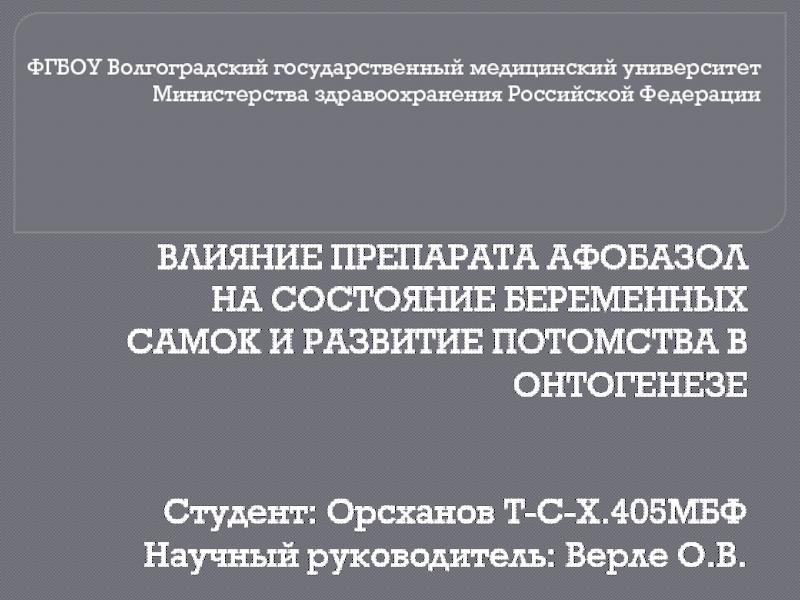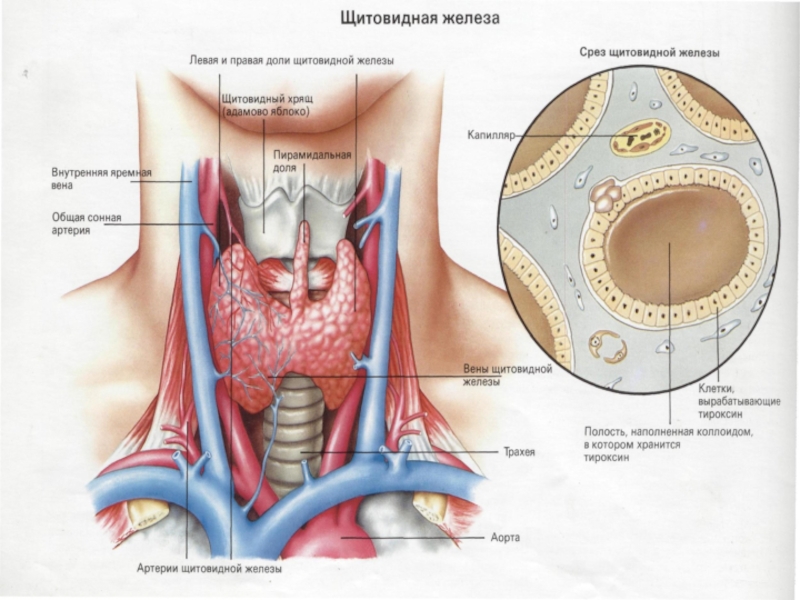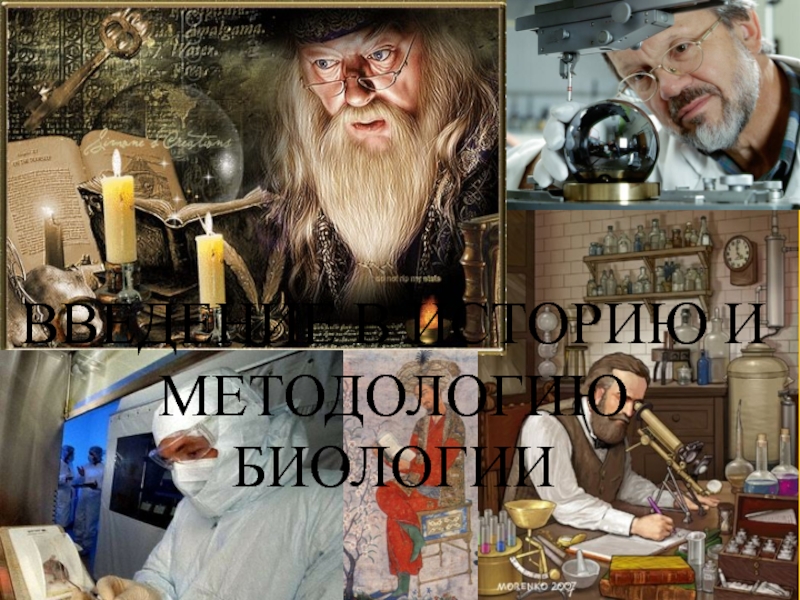- Главная
- Разное
- Дизайн
- Бизнес и предпринимательство
- Аналитика
- Образование
- Развлечения
- Красота и здоровье
- Финансы
- Государство
- Путешествия
- Спорт
- Недвижимость
- Армия
- Графика
- Культурология
- Еда и кулинария
- Лингвистика
- Английский язык
- Астрономия
- Алгебра
- Биология
- География
- Детские презентации
- Информатика
- История
- Литература
- Маркетинг
- Математика
- Медицина
- Менеджмент
- Музыка
- МХК
- Немецкий язык
- ОБЖ
- Обществознание
- Окружающий мир
- Педагогика
- Русский язык
- Технология
- Физика
- Философия
- Химия
- Шаблоны, картинки для презентаций
- Экология
- Экономика
- Юриспруденция
The cytoskeleton: microfilaments essential. Cell biology презентация
Содержание
- 1. The cytoskeleton: microfilaments essential. Cell biology
- 2. The Cytoskeleton Includes Dynamic Networks Of Microfilaments And Microfilaments
- 3. Microfilaments composed of actin are often found
- 4. Microfilaments Consist Of A Double Helix Of Actin Monomers Bound To Each Other
- 5. Microfilaments (MFs) consist of a double helix
- 6. Actin Polymerization Can Occur In Vitro.
- 7. Microfilaments like microtubules have plus and
- 8. Animation: Regulation of Actin Polymerization and
- 9. 3-D Microfilament Networks Are The Basis Of
- 10. Microfilaments Interact With accessory proteins (actin
- 11. Microfilaments Form Bundles using the crosslinking proteins
- 12. Microvilli Contain A Microfilament Bundle
- 13. Microfilament elongation in vivo is aided by
- 14. Animation of Actin Polymerization using Formin
- 15. In cells, the ends of microfilaments are
- 16. ARPs allow binding of minus ends to
- 17. Dynamics of Actin Networks in a slime mold.
- 18. Micro- Filament Networks Are The Basis
- 19. Steps In The Cycle Of Amoeboid Movement
- 20. Microfilament Networks Are Dynamic At The Leading Edge
- 21. Animation of ARP 2/3 induced branching of microfilaments as facilitated by WASP proteins
- 22. Cell Signaling Controls The Actin Cytoskeleton Formin Actin polymerization and branching
- 23. Micro- Filament Networks Are the Basis of Ameoboid Movement THE LEADING EDGE
- 24. Steps In The Cycle Of Amoeboid Movement
- 25. Focal adhesions use hundreds of transmembrane proteins
- 26. Steps In The Cycle Of Amoeboid Movement
- 27. Contraction of microfilament networks requires Myosin
- 28. The ability of myosin to walk on
- 29. Steps In The Cycle Of Amoeboid Movement
- 30. Endocytosis and vesicle transport
- 31. Soon-Tuck Sit, and Ed Manser J
Слайд 1Lectures 21 and 22:
The Cytoskeleton:
Microfilaments
Essential
Cell Biology
Third Edition
Chapter 17
Слайд 3Microfilaments composed of actin are often
found at the cortex of cells.
stress fibers that give shape to the cell. They
are highly dynamic forming networks that
serve as the basis for cellular motility.
Слайд 5Microfilaments (MFs) consist of a double helix
Of actin monomers
Platinum coated microfilaments
A single microfilament in vitro
Слайд 7Microfilaments like microtubules have plus and
minus ends that are not
favors polymerization. The minus end favors
depolymerization.
Minus End = “pointed end” Plus End = “barbed end”
Слайд 8Animation: Regulation of Actin Polymerization and Depolymerization inside cells using
Profilin binds to actin monomers (G-actin) to aid polymerization; cofilin binds to microfilaments (f-actin) to sever them and allow faster depolymerization
Слайд 93-D Microfilament Networks Are The Basis Of Dynamic Cell Structures: Network
Слайд 10Microfilaments Interact With accessory proteins
(actin binding proteins) In Forming Networks
or rapid Disassembly of networks
Microfilament
bundling
And crosslinking
proteins
Слайд 11Microfilaments Form Bundles using the crosslinking proteins α-Actinin And Fimbrin
Stress Fibers
Can shorten Can not shorten
Слайд 13Microfilament
elongation in vivo
is aided by the
accessory proteins
profilin and formin.
Profilin binds to
ATP- actin and the
complex acts as a
building block. The
complex prevents
nucleation.
Formin binds P-A
complexes and guides
them to the growing
(barbed) end of the Microfilament
Formin
Profilin
Actin
Слайд 15In cells, the ends of microfilaments are capped
with other proteins
and ARP 3 cap the minus end of microfilaments.
Слайд 16ARPs allow binding of minus ends to other
filaments. In this
can be formed that are used as
superstructures for cell shape and motility.
Слайд 19Steps In The Cycle Of Amoeboid Movement
Extension of leading edge due
Polymerization.
Linking of cell cortex to substratum via
connection of cortical microfilaments to
Adhesion plaques/focal contacts.
3. Rear of cell contracts and moves forward
by interaction of microfilaments with myosin.
4. Microfilaments depolymerize at rear of cell.
Plasma membrane is retrieved by endocytosis.
Actin monomers and membrane vesicles move to
front of cell via microtubules tracks to be reutilized.
Слайд 24Steps In The Cycle Of Amoeboid Movement
Extension of leading edge due
Polymerization.
Linking of cell cortex to substratum via
connection of cortical microfilaments to
Adhesion plaques/focal contacts.
3. Rear of cell contracts and moves forward
by interaction of microfilaments with myosin.
4. Microfilaments depolymerize at rear of cell.
Plasma membrane is retrieved by endocytosis.
Actin monomers and membrane vesicles move to
front of cell via microtubules tracks to be reutilized.
Слайд 25Focal adhesions use hundreds of transmembrane proteins called integrins for linking
Focal adhesions are
dynamically controlled allowing them to bind, and unbind from extracellular matrix fibers in a reversible manner. This allows them to serve as temporary anchors during cell movement.
Слайд 26Steps In The Cycle Of Amoeboid Movement
Extension of leading edge due
Polymerization.
Linking of cell cortex to substratum via
connection of cortical microfilaments to
Adhesion plaques/focal contacts.
3. Rear of cell contracts and moves forward
by interaction of microfilaments with myosin.
4. Microfilaments depolymerize at rear of cell.
Plasma membrane is retrieved by endocytosis.
Actin monomers and membrane vesicles move to
front of cell via microtubules tracks to be reutilized.
Слайд 27Contraction of microfilament networks requires
Myosin II filaments to make microfilaments
Rear of Cell
Contracts
Слайд 28The ability of myosin
to walk on actin filaments
is due to a
producing conformational
changes that is powered
by ATP hydrolysis. This
cycle is the same as in
skeletal muscle.
Слайд 29Steps In The Cycle Of Amoeboid Movement
Extension of leading edge due
Polymerization.
Linking of cell cortex to substratum via
connection of cortical microfilaments to
Adhesion plaques/focal contacts.
3. Rear of cell contracts and moves forward
by interaction of microfilaments with myosin.
4. Microfilaments depolymerize at rear of cell.
Plasma membrane is retrieved by endocytosis.
Actin monomers and membrane vesicles move to
front of cell via microtubules tracks to be reutilized.
Слайд 30
Endocytosis and vesicle transport from back to front.
Depolymerization
And transport of
actin
Via microtubule network and motor
proteins.
Movement of nucleus, cytoplasm and organelles back to front via
Myosin-induced movement along sub-nuclear stress fibers.
Слайд 31
Soon-Tuck Sit, and Ed Manser J Cell Sci 2011;124:679-683
ADHESION
PLAQUE/
FOCAL
CONTACT
CORTICAL
WHILE CELL ORGANELLES MOVE FORWARD
